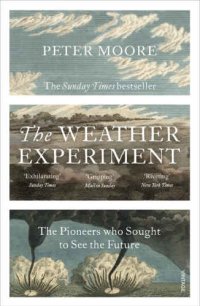In 1865 a broken Admiral Robert FitzRoy locked himself in his dressing room and cut his throat. His grand meteorological project had failed. Yet only a decade later, Fitzroy's storm warning system and 'forecasts' would return, the model for what we use today. In an age when a storm at sea was evidence of God's great wrath, nineteenth-century meteorologists had to fight against convention and religious dogma. But buoyed by the achievements of the Enlightenment a generation of mavericks set out to explain the secrets of the atmosphere and learned to predict the future. Among them were Luke Howard, the first to classify the clouds, Francis Beaufort who quantified the winds, James Glaisher, who explored the upper atmosphere in a hydrogen balloon, Samuel Morse whose electric telegraph gave scientists the means by which to transmit weather warnings, and FitzRoy himself, master sailor, scientific pioneer and founder of the MET Office. Reputations were built and shattered. Fractious debates raged over decades between scientists from London to Galway, Boston to Paris. Explaining the atmosphere was one thing, but predicting what it was going to do seemed a step too far. In 1854, when a politician suggested to the Commons that Londoners might soon know the weather twenty-four hours in advance, the House roared with laughter. Peter Moore's exhilarating account navigates treacherous seas, rough winds and uncovers the obsession that drove these men to great invention and greater understanding. Read more...
